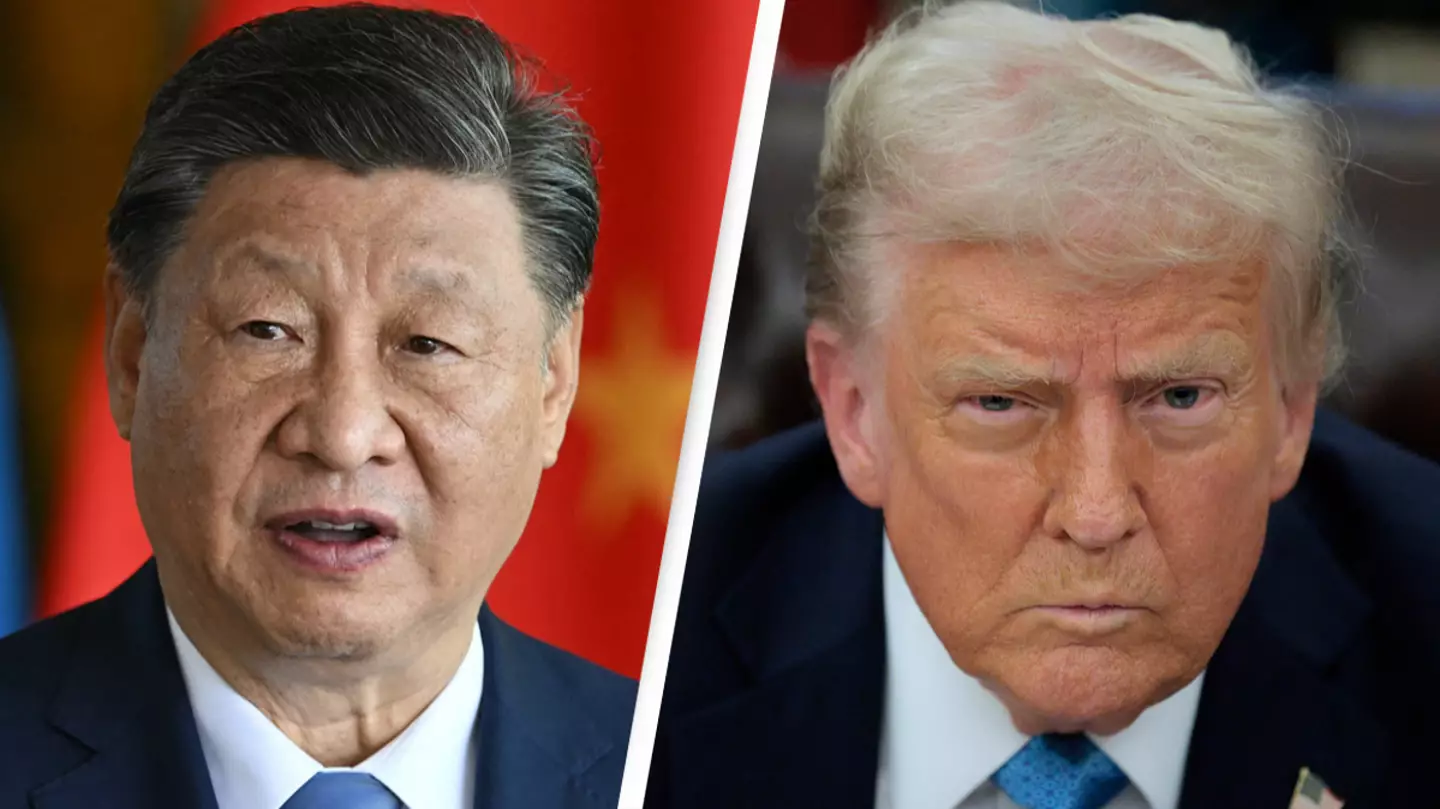In a move that marks a significant escalation in global trade tensions, China has swiftly retaliated against new tariffs imposed by the United States. President Donald Trump, citing economic and national security concerns, introduced a 10% tariff on Chinese imports, triggering an immediate response from Beijing. Within minutes of the tariffs taking effect on February 4, 2024, Chinese President Xi Jinping announced countermeasures, further deepening the ongoing trade dispute between the world’s two largest economies.
Understanding the U.S. Tariffs on China
On February 1, 2024, President Trump signed an executive order imposing a series of tariffs aimed at addressing what the White House has described as an “extraordinary threat” posed by illegal immigration and the flow of illicit drugs, particularly fentanyl, into the United States. The administration has accused China of failing to take necessary action against the distribution of precursor chemicals used in the production of synthetic opioids and has also cited concerns over money laundering by transnational criminal organizations.
While these tariffs primarily target Chinese goods, they are part of a broader strategy affecting trade with other North American partners. The executive order also imposed a 25% tariff on imports from Canada and Mexico, with a lower 10% tariff applied to energy resources and other select goods from Canada. The tariffs on Chinese imports officially came into effect on February 4.
China’s Swift and Strategic Response
Within minutes of the U.S. tariffs taking effect, China’s Finance Ministry unveiled a retaliatory tariff package of its own. The countermeasures include:
- A 15% tariff on U.S. coal and liquefied natural gas (LNG)
- A 10% tariff on crude oil, farming equipment, and certain automotive exports
- Export restrictions on critical minerals such as tellurium, molybdenum, tungsten, and ruthenium
These tariffs will take effect on February 10, 2024, adding further pressure to U.S. exporters who rely on the Chinese market.
In addition to these economic measures, Beijing has launched an investigation into Google, citing alleged violations of China’s Anti-Monopoly Law. The Chinese State Administration for Market Regulation issued a statement indicating that the probe was initiated “in accordance with the law,” adding another layer of tension to the already strained relations between the two economic giants.
What Are Tariffs and How Do They Impact Global Trade?
Tariffs are essentially taxes imposed on imported goods, designed to either protect domestic industries or generate government revenue. When a tariff is placed on a product, the cost of importing that item increases, which often leads to higher consumer prices.
While tariffs can provide short-term economic benefits by shielding local industries from foreign competition, they also come with potential downsides. Historically, advanced economies moved away from protectionist trade policies following World War II, as tariffs often lead to:
- Reduced international trade
- Higher prices for consumers
- Economic retaliation from trading partners
The Council on Foreign Relations has highlighted that tariffs often create more problems than they solve, leading to economic instability and strained diplomatic relationships. In this case, China’s swift countermeasures indicate that trade barriers imposed by the U.S. will not go unchallenged.
The Larger Political and Economic Context
The U.S. Perspective: A National Security and Economic Strategy
President Trump’s administration has justified the tariffs as a necessary step to protect national security and American jobs. The White House has framed the move as part of a broader effort to combat illegal immigration, drug trafficking, and intellectual property theft.
A White House press release stated:
“In response to China’s intellectual property theft, forced technology transfer, and other unreasonable behavior, President Trump acted with conviction to impose tariffs on imports from China, using that leverage to reach a historic bilateral economic agreement.”
Furthermore, the Trump administration has proposed a radical restructuring of the U.S. tax system, suggesting that tariffs on foreign goods could eventually replace federal income taxes. In a recent address to House Republicans at a retreat in Florida, the president reiterated his commitment to shifting the tax burden away from American citizens and onto foreign governments.
The Chinese Perspective: Economic Retaliation and Strategic Positioning
China’s response to the tariffs underscores its unwillingness to be economically strong-armed by the United States. By targeting key U.S. exports such as coal, LNG, and crude oil, Beijing is directly impacting industries that play a crucial role in the U.S. economy.
Additionally, the export controls on rare earth minerals—essential components in electronics, defense technology, and renewable energy—demonstrate China’s ability to disrupt global supply chains. By limiting access to these critical materials, China is sending a clear message that it holds leverage in the ongoing trade war.
Global Reactions and Market Impact
The latest developments have sent shockwaves through global markets, with analysts warning of increased volatility. The stock markets in both the U.S. and China saw immediate fluctuations as investors reacted to the escalating trade war.
- European Union officials have expressed concern over the broader implications of the U.S.-China conflict, warning that prolonged economic instability could impact global supply chains.
- Canada and Mexico, while initially included in Trump’s tariff package, have temporarily avoided further economic conflict after agreeing to send additional security forces to their respective borders.
- U.S. lawmakers are divided over the tariff strategy. While some Republicans have supported the administration’s tough stance on China, others have warned that tariffs ultimately act as a tax on American consumers.
Senator Rand Paul criticized the tariffs, stating:
“This is not a tax on China—it’s a tax on the American people. Every time tariffs are imposed, it’s the consumers who pay the price.”
Meanwhile, trade analysts caution that prolonged trade disputes could lead to job losses in industries that rely on international commerce, such as manufacturing, agriculture, and technology.
What’s Next in the U.S.-China Trade War?
As both countries implement retaliatory measures, the situation remains fluid. Key questions moving forward include:
- Will negotiations resume?
- In previous trade disputes, the U.S. and China have eventually returned to the negotiating table. However, with both sides taking hardline stances, a resolution may take time.
- How will global markets react?
- If the trade war escalates further, the impact on global trade and investment could be significant, leading to reduced economic growth.
- Could additional tariffs be imposed?
- Given President Trump’s firm stance on economic nationalism, further tariff hikes could be on the horizon.
- How will U.S. businesses respond?
- Companies that rely on Chinese imports may look for alternative suppliers or attempt to pass the increased costs onto consumers.
Conclusion: A Pivotal Moment in U.S.-China Relations
The latest trade conflict between the United States and China marks a critical moment in global economic relations. As tariffs take effect and countermeasures are introduced, both countries are bracing for potential long-term consequences. While the Trump administration views tariffs as a necessary tool to address trade imbalances and national security concerns, China’s response signals that it will not back down without a fight.
With global markets on edge and political tensions running high, the coming weeks will be crucial in determining the future trajectory of U.S.-China trade relations. Whether the two nations find a path to negotiation or continue down the road of economic confrontation remains to be seen. One thing is clear—the impact of this trade war will be felt far beyond Washington and Beijing.

